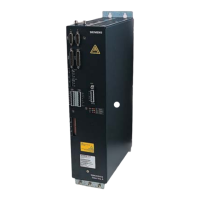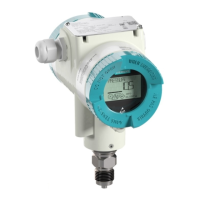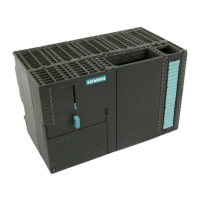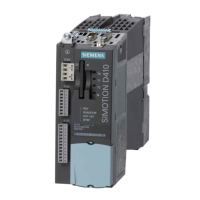6
6.16 Rotor position synchronization/rotor position identification
6-618
Siemens AG 2005 All Rights Reserved
SIMODRIVE 611 universal Description of Functions (FBU) – 04.05 Edition
The following should be done if faults occur:
Fault 611 (inadmissible motion):
––> Increase the parameterized load mass (P1076), check the max-
imum permissible motion (P1020) and if required, increase.
Fault 610 (rotor position identification unsuccessful) and P1734 = –4
(current rise too low):
––> The motor is not correctly connected
––> The motor power connections must be checked.
Fault 610 (rotor position identification unsuccessful) and P1734 = –6
(max. permissible duration exceeded):
––> This can be due to the following reasons:
– external forces have faulted the identification routine (e.g.
coupled axes have not been opened, surges, etc.),
– if the drive emits an excessive noise (a loud whistling sound) dur-
ing the identification routine, then the identification technique has
become unstable:
––> P1076 must be reduced,
– Extremely low encoder resolution:
––> use an encoder with a higher resolution
– encoder mounting is not stiff enough:
––> improve the mounting.
Fault 610 (rotor position identification unsuccessful) and P1734 = –7
(no clear rotor position has been found:
––> This can be due to the following reasons:
– the axis cannot freely move (e.g. the motor rotor is locked)
– external forces have disturbed the identification routine (refer
above)
– the axis has an extremely high friction:
––> the identification current (P1019) must be increased
If the rotor position identification routine was successful, the rotor posi-
tion which was found should be checked. This test function can deter-
mine the difference between the determined rotor position angle and
the rotor position angle used by the closed–loop control.
The following procedure should be applied several times:
1. Start the test function using P1736 = 1.
2. Evaluate the difference in P1737 – a spread of the measured values
of less than 10 degrees is acceptable. If this is not the case, then a
higher current must be used for the identification routine (P1019).
6 Description of the Functions
08.02

